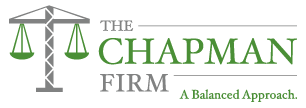For prior coverage from the Chapman Firm on what businesses need to know about the Families First Coronavirus Response Act, please read our overview of the Act and our FAQs on Expanded FMLA and Emergency Paid Sick Leave.
The Internal Revenue Service and the Department of Labor have issued a number of publications to assist businesses in implementing various portions of the Families First Coronavirus Response Act (FFCRA).
Summary of Key Points from the IRS Publication
The IRS has offered its own summary of the FFCRA and has confirmed that employers will receive 100% reimbursement for any family and medical leave they might pay employees as allowed by the FFCRA. The IRS has also confirmed that health insurance costs are included in the credit, that employers will face no payroll tax liability, and that self-employed individuals can receive an equivalent credit. Further, the IRS has promised that such refunds would be in the form of an “immediate dollar-for-dollar tax offset,” which would be sent to employers as quickly as possible. Other takeaways are as follows:
Small Businesses with Threatened Viability: The IRS emphasized that small businesses are protected under FFCRA. Where the viability of the business is threatened, employers with less than 50 employees are eligible for an exemption from the requirements to provide leave to care for a child whose school is closed, or whose child care is unavailable. (See below for DOL guidance as to the standard for what constitutes a threat to a business’s viability.)
Non-Enforcement Period: Notably, the IRS stated that FFCRA’s requirements were subject to a 30-day non-enforcement period, as long as employers make reasonable and good-faith efforts to comply. The DOL will be focusing its efforts on providing compliance assistance during this initial 30-day period rather than on enforcing non-compliance.
Businesses with Liquidity Issues: For businesses with liquidity issues, the IRS also explained that employers can take immediate advantage of paid leave credits by retaining and accessing funds that they would otherwise pay to the IRS in payroll taxes, such as federal income taxes, the employee share of Social Security and Medicare taxes, and the employer share of Social Security and Medicare taxes, with respect to all employees. The IRS promised additional guidance this week on retaining an amount of the payroll taxes equal to the amount of qualifying sick and child care leave that they paid, rather than depositing them with the IRS.
Additionally, employers can even get an expedited advance from the IRS if those amounts are not sufficient to cover the cost of paid leave by submitting a “streamlined claim form” which should be released this week. The IRS expects to process these advance requests in two weeks or fewer and promised that details on this new, expedited procedure should be coming out shortly.
Summary of Key Points from DOL Guidance on the Emergency Paid Sick Leave Act and Expanded FMLA
The DOL guidance confirms that, when paid sick leave and expanded FMLA overlap, as when an FMLA-eligible employee is caring for a son or daughter, the leaves run concurrently (not consecutively):
All employees of covered employers are eligible for two weeks of paid sick time for specified reasons related to COVID-19. Employees employed for at least 30 days are eligible for up to an additional 10 weeks of paid family leave to care for a child under certain circumstances related to COVID-19
…
A full-time employee is eligible for up to 12 weeks of leave (two weeks of paid sick leave followed by up to 10 weeks of paid expanded family & medical leave) at 40 hours a week, and a part-time employee is eligible for leave for the number of hours that the employee is normally scheduled to work over that period.
The DOL also echoed what the IRS has said about the initial 30-day grace period for enforcement, explaining that “good faith” exists “when violations are remedied and the employee is made whole as soon as practicable by the employer, the violations were not willful, and the Department receives a written commitment from the employer to comply with the Act in the future.” We expect more guidance to emerge from the DOL on this standard moving forward.
For additional questions about preparing your workplace for implementation of these new rules, contact The Chapman Firm.
